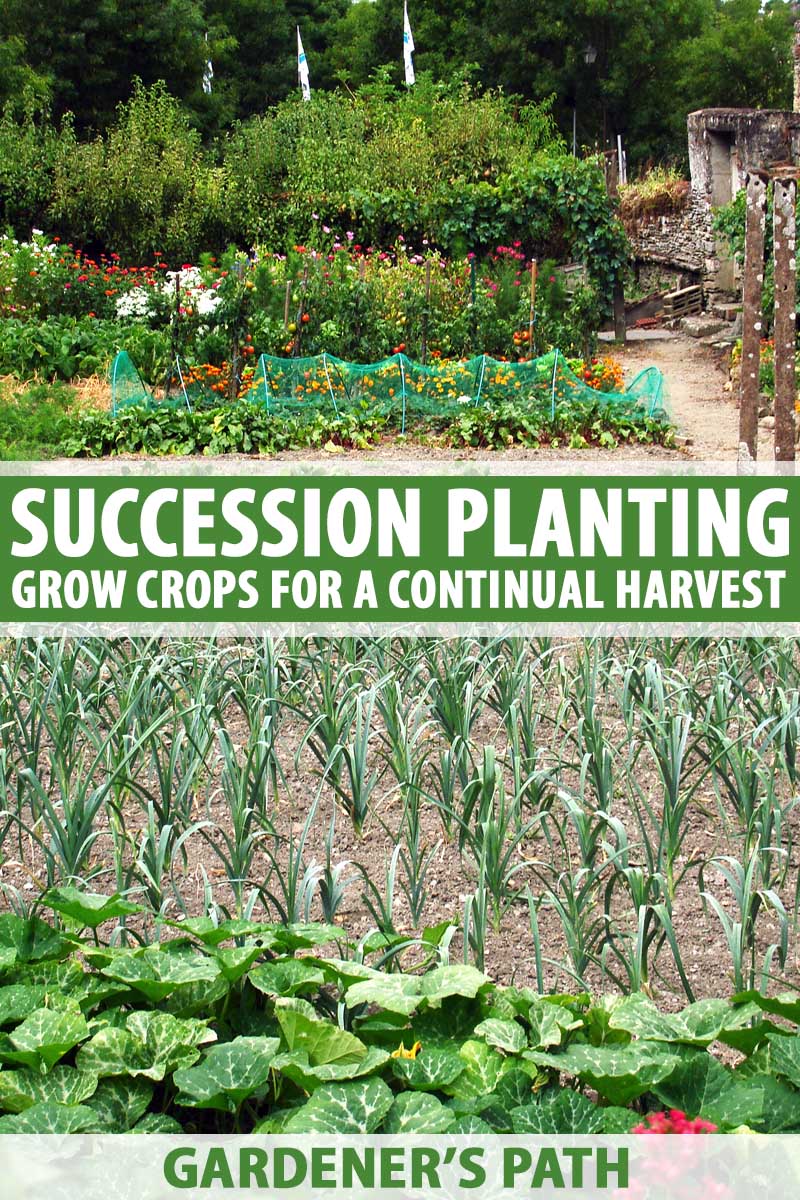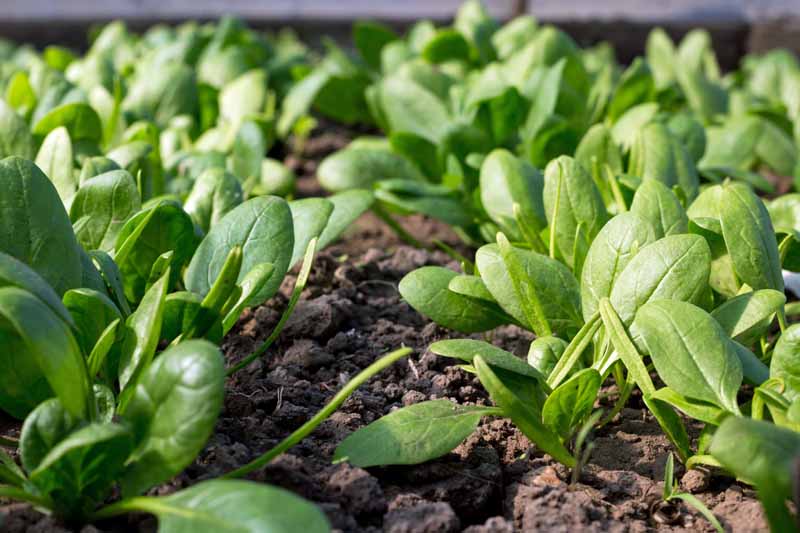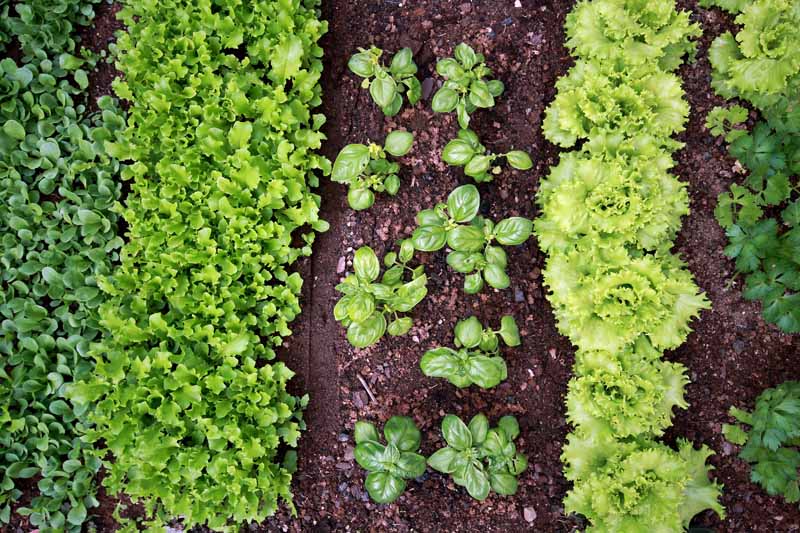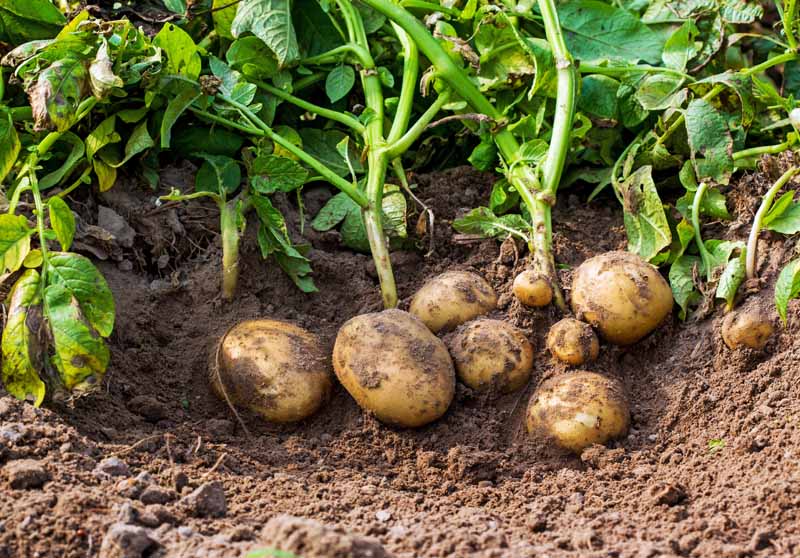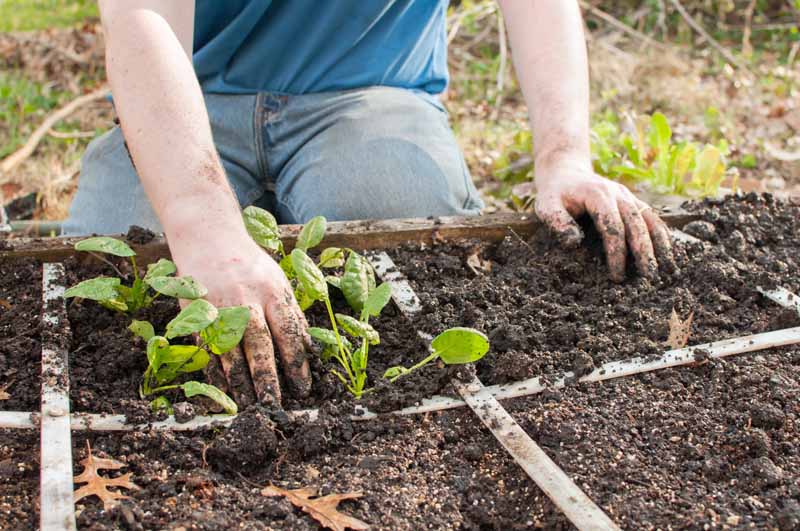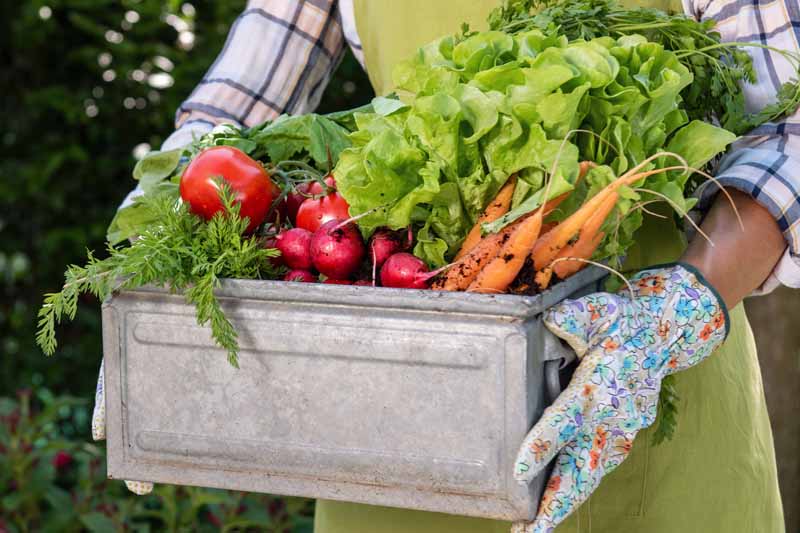I don’t know about you, but I am always on the lookout for ways to achieve a bigger payoff.
What is Succession Planting?
Succession planting is a method of staggering propagation of crops to produce a continual supply and extend the harvest season. With just a little forethought and creativity, you too can utilize this method to obtain repeated harvests of your favorite veggies from spring through fall!
Why Do It?
Wondering if succession planting is the right choice for your garden? There is no denying that gardening for successive harvests can add a level of complication to your garden management, and you may be asking yourself whether it is worth it. So what are the benefits? You might want to try succession planting if you:
Want fresh produce all season long, but don’t have the time or space for processing and storing a large single harvest. Want to maximize space in your garden. Want to extend your growing season for as long as possible. Want to minimize the risk of crops being ruined by poor weather, pests, or disease. Want to maintain a continuous fresh supply of the veggies you love! Want to maximize yields.
As you might have gathered, the benefits to repeated plantings are numerous. Succession planting is a win-win for all of us, and in my opinion, absolutely worth the effort!
Methods
Planting for continual harvest can take a bit of planning, and can also involve several different approaches, such as repeated plantings of the same crop, planting different varieties with different maturity timelines, and staggering or inter-planting of different veggies in the same space. Just about any crop can be part of a succession plan. Just make sure to choose appropriate methods for each type and pay attention to your local frost dates.
1. Same Crop, Staggered Plantings
This method simply involves recurrent plantings of the same species and/or cultivars over the course of the season. This works well for species that tend to have large initial yields and then slow down production, bolt, or die back completely such as peas, arugula, or broccoli. By staggering plantings every few weeks or so over the course of the season, you can continue to benefit from those initial heavy yields again and again.
To plan for repeated plantings of a single plant type, start by seeding or transplanting a portion of your garden bed while leaving space in the plot for more. As the season goes on, you can continue to fill it in over time. Length between plantings varies by species and cultivar. Refer to the chart below as a guide on how often you should plant each variety. Once a plant starts losing steam, don’t be afraid to pull it up and replant the area with the same type, or better yet rotate in different varieties, which will help reduce nutrient depletion in the soil and prevent disease. Many plants do well with this method, especially those with short seed to harvest times or single heavy yields. Short season species, or plants with less than 60-day maturity, such as lettuce, spinach, and arugula, can be planted every few weeks until later summer or early fall for a continued harvest. Many of these can continue to be seeded even longer if you have access to season extension tools such as cold frame or hoop houses.
Mid and long season crops, or those with 60+ day maturity, can also benefit from staggered plantings over the course of the season. Corn, beans, beets, peas, summer squash, cucumbers are examples of heavy yielding plants that do well when planted in succession for multiple harvests. With slower ripening varieties, just be sure to pay attention to maturity timelines to avoid planting too late in the season. To determine the safest time to finish plantings for any crop, simply count back the days to maturity from your first expected frost date. Days to maturity or days to harvest can vary by variety and is often listed on seed packets.
2. Different Plants, Same Space
This method involves utilizing the same garden space to grow more than one crop in succession. By composting plants as soon as they have passed their prime and replanting with something different, no space in the garden is left unutilized.
Generally, early season varieties can be planted in a bed that is later used for a longer maturing summer or early fall crop, and possibly again for a late fall crop. All sorts of combination of plantings can be made just as long as plants have time to mature before the growing season ends. For example, try planting early spring greens in a bed that will later be used for beans. Once your summer harvest dries up, try replanting the space with kale or collard greens. As an added benefit; legumes such as bush beans will fix nitrogen into the soil, so that your fall kale inherits a nutrient rich home!
3. Intercropping
Intercropping or companion planting refers to planting multiple species in the same space. Generally, this involves integrating early producing varieties with longer maturing ones and combining plants that have different spatial needs. Radishes, green onions, carrots, chard, and many leafy greens can easily be planted in between slower growing plants since they are quick to grow and don’t take up much space. The three sisters method is a Native American tradition that involves planting corn, beans, and squash together in mounds. In addition to simply saving space, this combination has several added benefits for the plants involved.
Beans fix nitrogen which improves soil fertility for nitrogen loving corn, while the corn provides a convenient pole for the beans to climb, and the squash act as a living mulch, shading out weeds, protecting the other crops from pests, and keeping the soil moist and healthy. Radishes and carrots are also a great combination. Both have similar growing requirements, and the quick emerging radishes will mature first, being ready for harvest by the time slower to develop carrots require more room to grow.
4. Same Plants, Multiple Varieties
If you choose cultivars wisely you can grow early, mid-season, and late-season varieties of the same crop, which in addition to allowing a longer and more abundant harvest, will also provide for some fun variation in flavor or appearance. For instance, if you plant early, mid, and late season potato cultivars, you might just have potato harvests all summer. Early potato varieties can be very different in texture, color, size, and taste from late season potatoes.
Personally, I often have trouble deciding between varieties when selecting seeds, and this way I have a useful reason to try more than one! Planting multiple strains of one species also reduces the risk that an entire crop will be destroyed due to unknown factors such as disease, weather, or pests. You can choose varieties that have different disease resistance, frost tolerance, or growth patterns. By incorporating several varieties and maturity ranges, you are providing extra insurance that at least one cultivar should succeed.
Extend the Season
Succession planting can be a great tool to help extend the growing season. With the right planning, you can produce larger yields throughout the summer, and even into fall and winter! Use season extension techniques such as cold frames, mulching, or greenhouses to continue planting longer into the fall! Check out this article on Gardener’s Path for ways to extend the harvest season.
Square Foot Gardening
If you are gardening in a small space, combine succession planting with a technique called square foot gardening to maximize space and variety of crops.
Simply divide a raised bed into sections and plant a different kind of veggie in each one. Once an area is harvested, you can reseed it with different crops for a continual harvest. Learn more about square foot gardening here.
Have a Clear Plan
Successful succession planting does take a bit of thought and preparation. I would recommend creating a garden plan, map, or outline before the season begins.
For me, the process has always been much easier when I have taken time to predetermine what I want to grow, where I want to grow it, and when I plan to plant it in my garden. Creating an outline of timing and space can really help you plan effectively. Start by considering the following questions:
How long is my growing season? What crops do I want to grow? How much space do each of them need? How long does each crop take to produce food?
With this information, you can make a layout of your garden, using a calendar, journal, or a garden planner to determine what you plan to plant, where you plan to plant it, and when your planting dates will be. There are many resources available to help you create a garden layout. Use the following chart to help guide you in your planning:
Succession Planting Reference Chart
If this seems daunting and you prefer to keep it simple, just abide by the following rule: once a crop has been harvested, pull it up, compost it, and plant something new! That really is the basic gist.
Tips and Tricks
One potential drawback of succession gardening is overtaxing soil. Because you are not giving the soil a chance to rest and replenish nutrients, this process can be hard on soil. To avoid depleting nutrients, always amend with organic material between plantings, mulch heavily, and rotate crops when possible. it is also good practice to occasionally leave a bed fallow and seed with cover crops. Do not replant the same or similar crops in areas that are experiencing pests or disease. Pull out plants that are past their prime to reuse the space for something else. Toss the removed plants in the compost bin to return those valuable nutrients to the soil. You can also try composting in place, or simply leaving removed plants to decompose directly in the garden bed. If they are not diseased, this is an efficient way to recycle soil nutrients. If you can, start transplants in pots or flats while you are waiting for space from a crop finish in the garden. By the time you are ready to plant your new crop it already has a significant head start. Select quick maturing varieties so you can harvest quickly and grow more!
Write it down! I find it very helpful to keep records of when and where I plant something, and to make a note in my planner reminding myself to reseed every few weeks.
Worth the Effort?
I am always looking for ways to improve yields, increase variety, and keep my garden producing more for longer! Succession planting may involve a little bit of prep work, but what it takes in planning, it makes up tenfold in abundant harvests.
Do you have experience with succession planting? What tips and tricks do you have for obtaining a continual harvest? Share your stories in the comments below! And if you would like more garden tips and advice, then check out some more of our popular guides:
Why & How You Should Lime Your Lawn and Garden Bone Meal: Friend or Foe? Learn How to Use It in Your Garden 15 of the Best Cover Crops for the Home Garden What Every Gardener Should Know about Peat Moss (Plus 5 Alternatives)
© Ask the Experts, LLC. ALL RIGHTS RESERVED. See our TOS for more details. Uncredited photos: Shutterstock.

